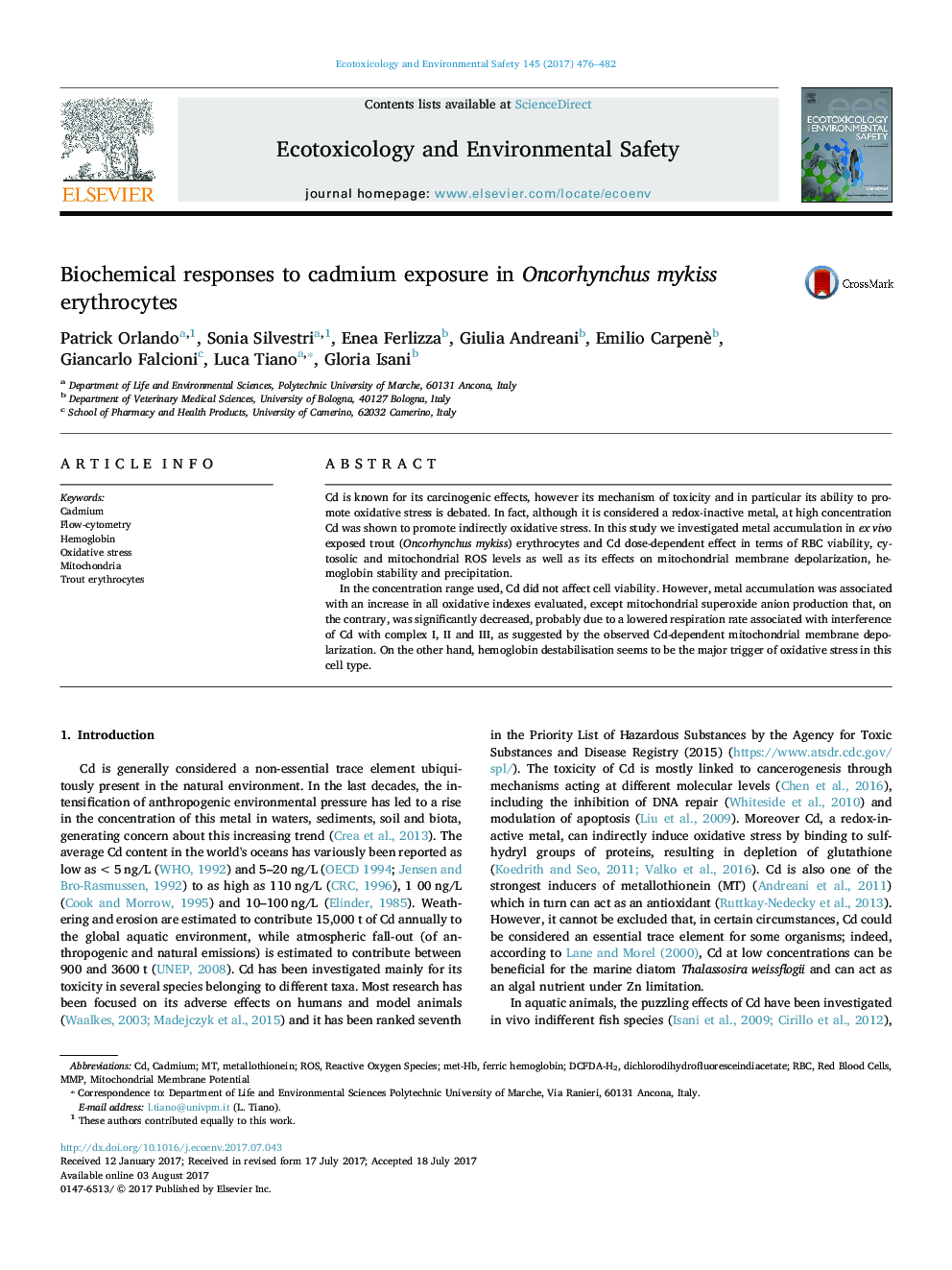| Article ID | Journal | Published Year | Pages | File Type |
|---|---|---|---|---|
| 5747730 | Ecotoxicology and Environmental Safety | 2017 | 7 Pages |
â¢Cd accumulates in exposed trout RBC, but did not affect cell viability.â¢Cd promotes intracellular ROS production, met-Hb formation and Hb precipitation.â¢Cd promotes mitochondrial depolarization and superoxide anion formation.â¢MRC/Cd interaction could decrease respiration leading to lower O2- production.
Cd is known for its carcinogenic effects, however its mechanism of toxicity and in particular its ability to promote oxidative stress is debated. In fact, although it is considered a redox-inactive metal, at high concentration Cd was shown to promote indirectly oxidative stress. In this study we investigated metal accumulation in ex vivo exposed trout (Oncorhynchus mykiss) erythrocytes and Cd dose-dependent effect in terms of RBC viability, cytosolic and mitochondrial ROS levels as well as its effects on mitochondrial membrane depolarization, hemoglobin stability and precipitation.In the concentration range used, Cd did not affect cell viability. However, metal accumulation was associated with an increase in all oxidative indexes evaluated, except mitochondrial superoxide anion production that, on the contrary, was significantly decreased, probably due to a lowered respiration rate associated with interference of Cd with complex I, II and III, as suggested by the observed Cd-dependent mitochondrial membrane depolarization. On the other hand, hemoglobin destabilisation seems to be the major trigger of oxidative stress in this cell type.
